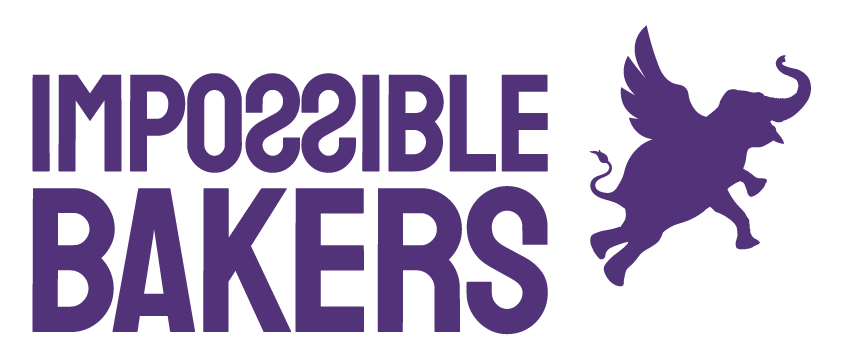
Marta Castro
Nutricionista y paciente migrañosa.
Especialista en investigación farmacológica y fundadora de "Más días sin migraña".
@mes.dies.sense.migranya
KETOSIS AND MIGRAINE
Migraine is a complex neurological disease that affects 15% of the world's population.
Migraine is a type of headache or chronic episodic and recurrent headache of great intensity that prevents the affected person from carrying out their daily activities.
In addition to the pain that can manifest on one or both sides of the head, there are other symptoms such as discomfort from stimuli such as light, noise and odors, nausea, vomiting, fatigue and mental confusion.
According to the WHO, migraine is the leading cause of disability in the population between the ages of 30 and 50 .
Causes of migraine
Migraine is a disease of genetic origin , more than 140 genes have been identified that predispose to suffering from the disease.
These genes will be expressed according to the influence of the environment , that is, factors such as lifestyle, stress, the toxins to which we are exposed and the type of diet.
Epigenetics is the study of how the environment can modulate our genes, and is demonstrating that through nutrition and lifestyle we can modulate how our genetic endowment is expressed.
Ketogenic diet and headache
The ketogenic diet is a diet based on high fat intake, normal protein and very low carbohydrate intake . Thus, in the absence of carbohydrates, fats become the body's main energy substrate.
Fats or lipids are large molecules that the liver transforms into smaller ones so that they can be used as a source of energy. These smaller molecules are ketone bodies or ketones, that is, ketones are generated in the ketogenic diet, hence its name.
The first studies on the application of the ketogenic diet as a therapeutic tool were carried out at the beginning of the 20th century in patients with refractory epilepsy.
After the first studies, a few years ago this idea was recovered, and currently many studies are being carried out on the therapeutic use of the ketogenic diet in various neurological diseases , such as migraine, Parkinson's, Alzheimer's, spectrum disorder. autism or epilepsy, also in cancer and type II diabetes.
Could migraines have a metabolic origin?
The brain is a great consumer of energy and does not have systems to store it. In fact, it is estimated that it uses 20% of the total energy, but, in people who suffer from migraine, this energy expenditure can be increased by up to an additional 20%.
As we said above, the exact causes of migraine are still not well known, although it is known that, during attacks, the brain suffers an energy deficit that forces it to stop .
It is believed that, in 50% of cases, migraine may have a metabolic origin. This means that the crises could be caused by this energy deficit , and that nutritional therapy that continuously provides the brain with the energy it needs could be the solution.
This is precisely what the ketogenic diet aims to achieve: to provide a linear (without peaks or valleys) and sufficient energy supply.
Ketone bodies can cross the blood-brain barrier (which protects the brain from microorganisms and toxins) and be used by the brain as a fast, stable and efficient source of energy .
On the other hand, when the main source of energy is carbohydrates (according to the traditional pyramid, they will represent 55% of the energy), we are subjecting the body to a roller coaster with peaks and valleys of glucose and insulin , constantly going from one level to another. state from hyperglycemia to hypoglycemia. That is, we fluctuate from states with a lot of available energy to states where we do not have it , and the brain does not like these fluctuations.
Aside from the energy stability that the brain so desperately needs, ketone bodies provide many more migraine-related benefits, as they have the ability to act on some of the pathways believed to be involved in the pathophysiology of migraine, such as:
- The mechanisms involved in the generation of pain.
- The balance of inhibitory and excitatory neurotransmitters necessary for normal neuronal function.
- Neuroinflammation.
It should be noted that the ketogenic diet could have a neuroprotective role and contribute to restoring the excitability and metabolism of the brain.
The ketogenic diet as a therapy for migraine
For everything we have just seen, the ketogenic diet is today considered a therapeutic intervention capable of modulating brain metabolism.
Studies show improvements in both the number of seizures and their duration in people who follow a ketogenic diet, compared to those who follow a standard diet or a low-calorie diet.
There is sufficient evidence about the benefits that a ketogenic diet can provide to people with migraine , although more studies are needed on its therapeutic use in patients.
Migraine is a very complex disease that requires an integrative approach. A ketogenic diet, lifestyle changes, good stress management, exercise, and regular sleep schedules have been shown to give you MORE MIGRAINE-FREE DAYS .
BIBLIOGRAPHY
- Gross EC, Lisicki M, Fischer D, Sándor PS, Schoenen J. The metabolic face of migraine - from pathophysiology to treatment. Nat Rev Neurol. 2019 Nov;15(11):627-643. doi:10.1038/s41582-019-0255-4. Epub 2019 Oct 4. PMID: 31586135.
- Bongiovanni D, Benedetto C, Corvisieri S, Del Favero C, Orlandi F, Allais G, Sinigaglia S, Fadda M. Effectiveness of ketogenic diet in treatment of patients with refractory chronic migraine. Neurol Sci. 2021 Sep;42(9):3865-3870. doi:10.1007/s10072-021-05078-5. Epub 2021 Feb 1. PMID: 33527209.
- Barbanti P, Fofi L, Aurilia C, Egeo G, Caprio M. Ketogenic diet in migraine: rationale, findings and perspectives. Neurol Sci. 2017 May;38(Suppl 1):111-115. doi:10.1007/s10072-017-2889-6. PMID: 28527061.
- Gross EC, Klement RJ, Schoenen J, D'Agostino DP, Fischer D. Potential Protective Mechanisms of Ketone Bodies in Migraine Prevention. Nutrients. 2019 Apr 10;11(4):811. doi:10.3390/nu11040811. PMID: 30974836; PMCID: PMC6520671.
- Qu C, Keijer J, Adjobo-Hermans MJW, van de Wal M, Schirris T, van Karnebeek C, Pan Y, Koopman WJH. The ketogenic diet as a therapeutic intervention strategy in mitochondrial disease. Int J Biochem Cell Biol. 2021 Sep;138:106050. doi: 10.1016/j.biocel.2021.106050. Epub 2021 Jul 21. PMID: 34298163.
Martha Castro
Nutritionist and migraine patient
CAT-002207

OTROS ARTICULOS RELACIONADOS
Por un poco de azúcar no pasa nada... ¿Seguro que no pasa nada?
Intermittent fasting: what it is, what it is based on and what are its benefits
Carbohydrates, two sides of the same molecule
Essential amino acids: what they are, what they are and why we need them
Transition to a Low-Carb Life
How to get back into Ketosis?
Sugar-Free & Low-carb: real health
Keto Flu Effects: What Are They and How to Soften Them?
How do I know if I am in ketosis?
Keto and fasting
Foods allowed and not allowed on the Keto diet
Benefits of the Keto Diet vs. other diets
What is the Keto or Low Carb diet?
Read more

Essential amino acids: what they are, what they are and why we need them
You may have heard that the nutrients that make up the foods we eat are divided into micronutrients and macronutrients . The first are vitamins and minerals, while the second are carbohydrates, fa...
Read more
Carbohydrates, two sides of the same molecule
Carbohydrates are part of the so-called macronutrients , a heterogeneous group that they make up along with fats and proteins. These three types of macronutrients are processed by our digestive sys...
Read more



